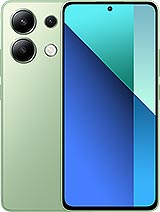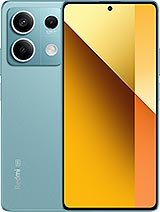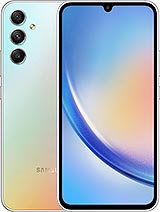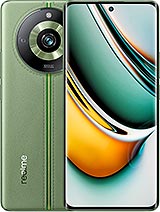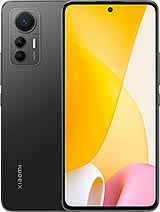Xiaomi Redmi Note 13 5G review

Display
The Redmi Note 13 5G has a 6.67-inch AMOLED screen with an extended 1080p resolution (395ppi). It supports a supposedly adaptive 120Hz refresh rate and 1,920Hz PWM dimming. Some markets, like Spain, will also get this phone with a 10-bit color depth panel.
A sheet of Gorilla Glass 5 handles the protection.

According to the official specifications, the screen has up to 1,000nits of peak brightness.
We captured 488nits of maximum brightness when controlling the brightness slider manually.
When using the Auto Brightness mode or with the Sunlight Boost enabled, the screen can be a lot brighter - 991 nits, to be specific. Oddly, the (under screen) ambient light sensor misbehaved and often did not react to the bright light immediately, or at all. It took us a lot of attempts to make the screen increase the brightness.
The minimum brightness at point white was just 1.9 nit.
Refresh rate
The display supports up to 120Hz refresh rate, and there are two refresh modes - Custom (choose between 120Hz or 60Hz refresh rates), and Default (automatic switching behavior).

The adaptive refresh rate works as expected - it drops down to 60Hz when the screen shows static content. All streaming apps are capped at 60Hz for UI and streaming, too. And, of course, incompatible HFR apps such as the Camera app and Google Maps are always rendered at 60fps.
The adaptiveness is available for the dedicated 120Hz mode as well, but a few more apps, could go up to 120Hz as opposed to the default mode.
HDR video
There is no HDR video support for the Redmi Note 13 5G. Widevine DRM is level L1, which means you can stream in 1080p resolution.
Battery life
Our new Active Use Score is an estimate of how long the battery will last if you use the device with a mix of all four test activities. You can adjust the calculation based on your usage pattern using the sliders below. You can read about our current battery life testing procedure here. For a comprehensive list of all tested devices so far, head this way.
The Redmi Note 13 5G has the same size screen and battery as the rest of the Note 13 models, plus its chipset should offer good energy efficiency.
Unfortunately, that is not the case. The Redmi Note 13 5G scored 9 hours and 49 minutes of Active Use Time. And while it can last over 34 hours in call, it scores about 9 hours of web, 10 hours of videos and less than 6 hours on gaming - all quite unimpressive battery times.
Charging speed
The Redmi Note 13 5G supports 33W fast charging and it comes with a 33W power adapter and a 3A-rated USB cable.

And that 33W adapter recharged 29% of the Redmi Note 13's dead battery in 15 minutes and 50% in half an hour. We clocked 100% after 76 minutes.
Note that these new Note 13 models have this Charging Boost option in the advanced battery settings. It increases the charging speed when the screen is turned off. The difference is between 5%-7% in the first 30 mins. We carried out our test with this option being active.
Speaker - loudness and quality
The Redmi Note 13 5G has a single, bottom-firing speaker, unlike the rest of the Redmi Note 13 models. The speaker offers Dolby Atmos for some reason, but with or without it, we heard no differences.
The speaker also supports 200% loudness boost - the last step of the volume slider. It focuses on extremely on the high-frequency range and mutes everything else. And even with this awful tuning, the speaker scored the same as the regular 100% - Very Good. Of course, having mostly vocals and high will score high, but will not sound good in real life, average at best.
Use the Playback controls to listen to the phone sample recordings (best use headphones). We measure the average loudness of the speakers in LUFS. A lower absolute value means a louder sound. A look at the frequency response chart will tell you how far off the ideal "0db" flat line is the reproduction of the bass, treble, and mid frequencies. You can add more phones to compare how they differ. The scores and ratings are not comparable with our older loudspeaker test. Learn more about how we test here.
Reader comments
- Your mom
- 06 May 2024
- akb
This phone is overall great. For the price I think this pho
- Anonymous
- 05 May 2024
- KIt
The battery is not good. Charge quickly and downs quickly


